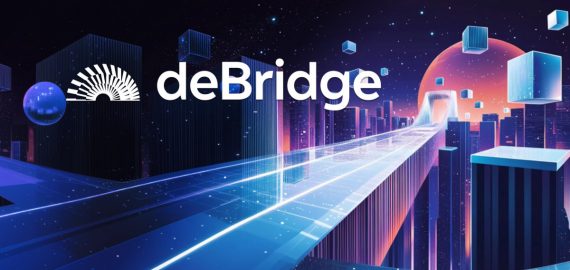Naman Sehgal Details ZKX’s Innovative Approach to Enhance User Experience and Drive Decentralisation


In Brief
Naman Sehgal, co-founder of ZKX, discusses Web2.5, Web3, and user-centric design in TOKEN2049, highlighting the importance of simplicity, accessibility, and Layer 2 solutions.
In this interview with Naman Sehgal, co-founder of the decentralised exchange ZKX, conducted within the scope of TOKEN2049, the concept of Web2.5 is explored in the context of the evolving landscape of Web3. Sehgal talks about the intricacies of transitioning users from Web2 to Web3 platforms, emphasising the importance of simplicity, accessibility, and user-centric design. Through discussions on liquid governance, the advantages of Layer 2 solutions, and the future of decentralised finance, Sehgal offers insights into ZKX’s innovative approach and its vision for the future of blockchain technology.
In one of the recent tweets from ZKX, it’s mentioned that The “Future of Web3 is Web2.5”. What does Web2.5 mean?
Web3 is still very dependent; there are still a small number of people. We still need the entire infrastructure, support, and all the channels that are there in Web2.
As much as Web3 is all about decentralisation, trying to organise everything, have self-custody, it’s also about not revealing identities. The reality is that to actually grow something massive like a Web2 company, you still need the same things. You need the money, the on-ramps, the users from Web2. Hence, we always say that the future of Web3 is Web 2.5.
The important understanding over here is that until and unless you remove the barriers to entry of the Web3 experience, you can never have retail users start coming and using us. So, you have to think like a Web2 company; it has to be very simple.
In our case, we have to give them the experience of a centralised exchange. So, it’s like you log in with your password. It’s very much like a centralised exchange; everything is very simplified. Regional language, customer service, etc. If you don’t cover that, then you get stuck to just targeting the 15,000 and 20,000 DeFi traders across the world. But if we do that, we can target the millions of users that centralised exchanges can boast.
Are there any things from Web2 that you think we can extract and use in Web3?
There is still a certain type of check that ensures that you are not a criminal or a terrorist. Obviously, a lot of these solutions are in very nascent stages. I haven’t seen any mass deployments of them.
But I think these sorts of on-chain KYC solutions will be there, which still give you a certain amount of anonymity, but they actually clarify that you’re actually a legitimate person. I think something like that will appear soon, and that might be something quite useful.
How do you think it’s possible to attract more ordinary users to the decentralised exchanges?
For the end user, you need a product that is frictionless. Having ordinary people understand what staking means, reading white papers is too complicated. So, how do you simplify these things? You can simplify by bringing things, such as making Web3 things that are understandable to retail and relatable to them.
We designed a rewards system in a much simpler way. Just like in the real world, you hold shares in a company. So, the company makes money, and you get dividends.
We also cannot grow something aimed at retail users unless you give them regional language support, customer service, ease of use, and simplifying things. All of these factors together are very important.
How do you plan to sustain the user growth and engagement witnessed in recent months, particularly with the introduction of new features such as Pro Trade’s 24-hour Leaderboard and visible trading fees?
Most of the people that you find are very interested in trading. They love the idea of it, but they don’t really understand it. So we wanted to give them an experience, which was OG Trade. You only have market orders; you basically take positions and get rewarded for risk-taking. We also reward top volume, top profit and top losses. So it’s a playground where you can learn to trade and be rewarded even if you’re not losing.
Once you’re comfortable with that, then you can start using ProTrade, which is more professional in general. Coming from that mindset, we realised that being in ProTrade, it’s also important to incentivise ProTrade users as well.
Also, it was extremely important to actually show trading fees because ProTrade also attracts large institutional clients. You have to earn their trust and show them that they’re not paying much more. You have to really show that visually over there. They’re actually here for long-term trading. And if somebody is doing this professionally, the fees really make a massive difference in making a choice.
Elaborate more on the liquid governance for the ZKX token and how it works for the token holders.
The idea is actually quite simple. You stake ZKX tokens, or you trade on ZKX. By doing both of these things, you will accrue ZKX digital shares. Think of them like soulbound tokens. You can’t transfer them; they are basically something that you earned.
But these soulbound tokens have decay built into them. So what it means is that if you unstake or you stop trading, they actually decay out over time. Only till the time you have these soulbound tokens, ZKX digital shares, will you be able to participate in the governance of the protocol as well as earn staking rewards.
Unless you’re actively engaging with the protocol as a staker or trader, you should not be getting the rewards or be able to participate in the overall governance of the protocol. That’s what essentially liquid governance does; it gives flexibility and power to the actual users of the protocol instead of just the large token holders.
In what ways do you provide a smooth transition for traders from L1 to L2? And what are the advantages of moving to L2 for them?
We have our native bridge infrastructure, which helps in bringing liquidity from L1 to L2. Due to the ZKX account, you have a unique experience. The main reason for choosing to build on L2 and Starknet, in our case, was that they had tried and tested technology.
The benefits are obvious not only in terms of the safety and security that the L2 generally brings, but it’s obviously there. But the other super important bit for us at the time was also understanding that in the future, since being a derivatives DEX, you will be generating a lot of volumes and a lot of proofs, and they need to be settled somewhere. Every time you basically do the settlements, it actually costs us a lot.
We realised that after the Ethereum upgrade, which happened last month, the cost of these L2 transactions went significantly down. So it makes sense from a unit economics perspective to actually build over there because the business is stable.
Do you think there are still any issues in DeFi that should be addressed?
In terms of decentralised finance, it is a very flexible green field right now; there are a lot of things happening. Now, we have pre-launch perps, which is another speculative market for something that has not been launched. There were ecosystems like whale markets, where people were trading or creating secondary markets for unlaunched tokens. It’s amazing, but I think it could potentially create a lot of economic downfall.
It is very volatile, and you’ll see a lot of people losing money eventually, and it becomes a serious problem. It starts attracting the attention of the SEC and the authorities, and you have to be careful. You have to build something that is fair and innovative, but you may also be a little bit cautious in the future.
Can you share your insights regarding Token2049 and the expected benefits?
We met some really amazing people over there in Dubai. We love to meet our existing partners face-to-face. It’s time for us to really connect with them. We’ve been working with a lot of people for so long that we never met, and we love to kind of catch up and figure things out. It always makes a very massive difference when we meet in person versus when we’re meeting like this, right?
In the next 1-2 months, we will have a listing, and we’re just looking at the exact dates and venues. We want to make an announcement once everything is locked up. So that’s why we’re kind of withholding ourselves. We have some names and dates, but we’ll share the latest updates very soon.
Disclaimer
In line with the Trust Project guidelines, please note that the information provided on this page is not intended to be and should not be interpreted as legal, tax, investment, financial, or any other form of advice. It is important to only invest what you can afford to lose and to seek independent financial advice if you have any doubts. For further information, we suggest referring to the terms and conditions as well as the help and support pages provided by the issuer or advertiser. MetaversePost is committed to accurate, unbiased reporting, but market conditions are subject to change without notice.
About The Author
Victoria is a writer on a variety of technology topics including Web3.0, AI and cryptocurrencies. Her extensive experience allows her to write insightful articles for the wider audience.
More articles

Victoria is a writer on a variety of technology topics including Web3.0, AI and cryptocurrencies. Her extensive experience allows her to write insightful articles for the wider audience.

















































